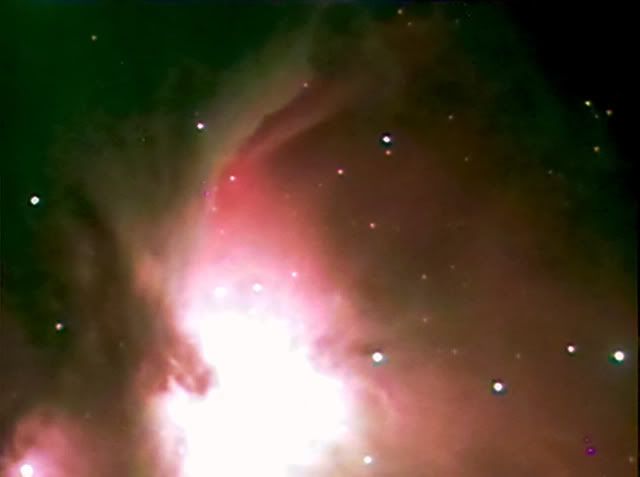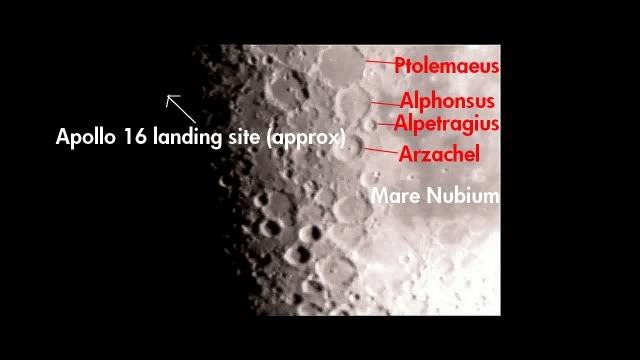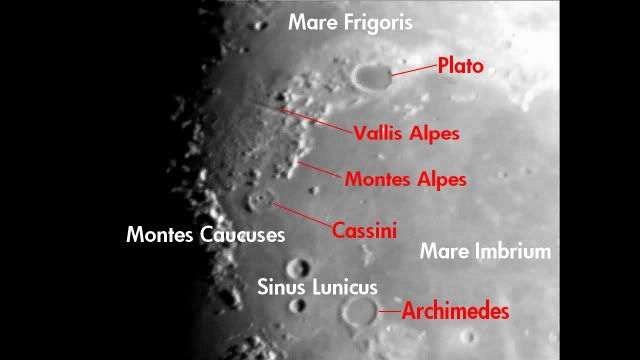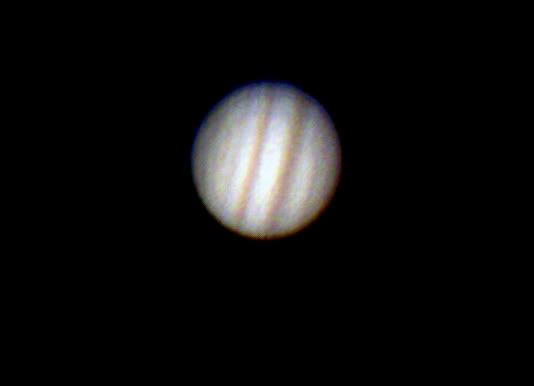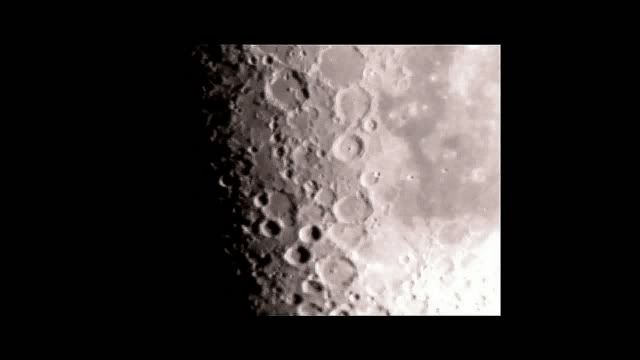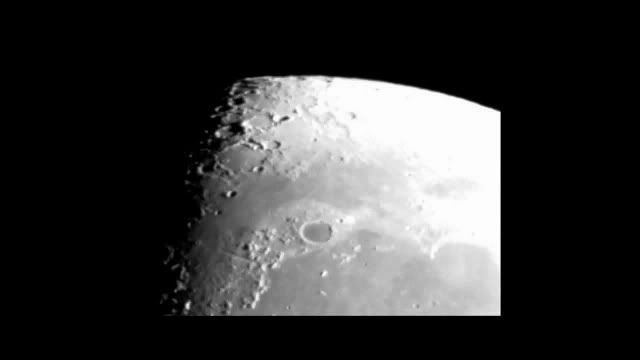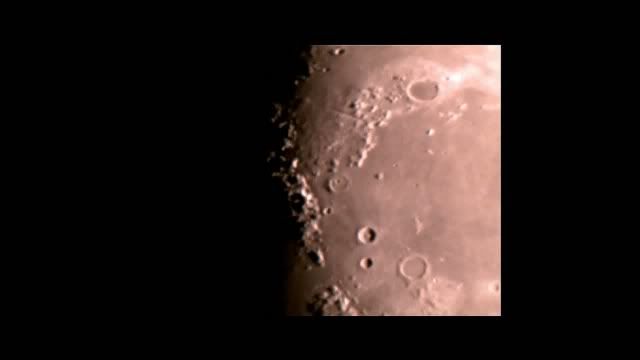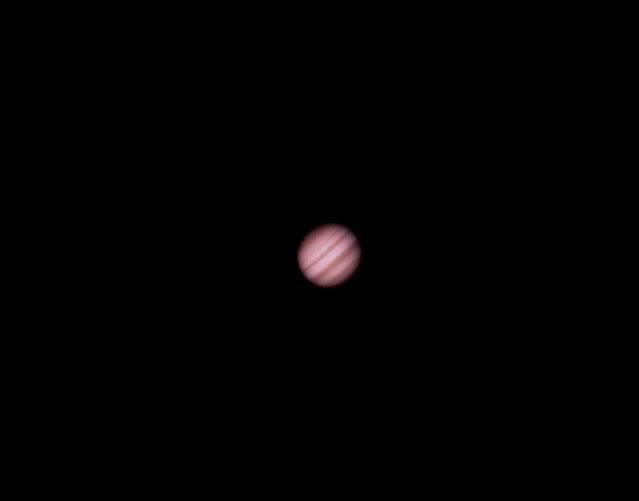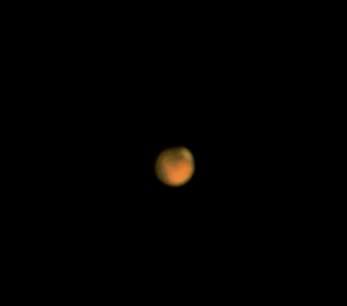Sunday, January 29, 2012
Memory Lane...
Found my 1st telescope today on ebay. I was about 10 or 11 when I got it. I thought it was a full blown observatory-like instrument that would show me anything. I remember the mount being stiff and hard to turn/adjust which led to my ultimate frustration with the instrument. The only thing I was able to observe with any clarity was the moon. This scope was responsible for igniting my fire for astronomy, a hobby that provides a lifetime of rewards. I miss this scope, and wonder what I could make it do with today's technology.
Friday, January 20, 2012
Pinwheel Galaxy, M101, best I can do with it
Messier 101, the "pinwheel" galaxy, is an asymmetrical or "heavy arm" spiral galaxy approximately 27 million light years away in Ursa Major. Also home to a recently discovered supernova, SN2011fe.I am not too happy with this shot, it is a 3 frame composite stacked in deep sky stacker with the usual levels/curves/astrotools action panel in photoshop. It is what it is, hope to do better..
8 inch celestron SCT / Mallincam Color Hyper / 3 14 second exposures
8 inch celestron SCT / Mallincam Color Hyper / 3 14 second exposures
Wednesday, January 18, 2012
Messier 77
Well, went through the reject bin, and only one pleases me enough to post. Messier 77/NGC 1068. Barred spiral galaxy in Cetus. Same setup as always, this was a stack of 4 14' frames in DSS, curves/levels/astrotool actions via PS.
Insomnia gettin' the best of me...
Lots of turmoil at work. I am going for a promotion, but other things in motion may make it a short celebration even if I get it. Kinda has me stressed, and having a helluva time getting to sleep. Doesn't help that I am a day sleeper, lol.
Last week's imaging really taught me the necessity of having an electronic focuser. After perusing cloudy nights forum, a user posted this DIY solution:
http://emediadesigns.com/focuser/
This is an amazing build tutorial, and I honestly think I can do it. Most expensive part is the servo. Servo is modified for continuous rotation both ways, selectable by polarity of course. I love simple projects, so I might start work on the hand controller tonight. I am estimating about 25-30 dollars to build this since I already have some of the parts. Much better than the JMI motofocuser that retails around 170. As the project goes on I will update here with pics and tips.
More immediately, since I was so pleased at my last image of m42 that I found on my laptop, I am going to try a few others on there and play with the processing. Beats laying awake in bed, lol. I was not impressed with the raw images and had written them off, but the last m42 image tells me I may have been a bit premature. As always, if it is not too embarrassing I will post here. If they suck, well..
Last week's imaging really taught me the necessity of having an electronic focuser. After perusing cloudy nights forum, a user posted this DIY solution:
http://emediadesigns.com/focuser/
This is an amazing build tutorial, and I honestly think I can do it. Most expensive part is the servo. Servo is modified for continuous rotation both ways, selectable by polarity of course. I love simple projects, so I might start work on the hand controller tonight. I am estimating about 25-30 dollars to build this since I already have some of the parts. Much better than the JMI motofocuser that retails around 170. As the project goes on I will update here with pics and tips.
More immediately, since I was so pleased at my last image of m42 that I found on my laptop, I am going to try a few others on there and play with the processing. Beats laying awake in bed, lol. I was not impressed with the raw images and had written them off, but the last m42 image tells me I may have been a bit premature. As always, if it is not too embarrassing I will post here. If they suck, well..
Tuesday, January 17, 2012
Probably more accurate colors this time
Monday, January 16, 2012
Old pic, just processed
This was a 7 second integration of M42 that I took last month and forgot about on my laptop. Stacked 4 frames in deep sky stacker, processed for levels and curves in photoshop. Sorry the middle is blown out, usually unavoidable with the mallincam. I still like it though. Mallincam Hyper Color, 7 second integration, stock Celestron NexStar 8SE alt-az. Yes, I know I need a focal reducer.
Sunday, January 15, 2012
More images from last night, just cause..
Here is the best Jupiter that I had to work with. No amount of stacking can fix bad focus + poor seeing. I do, however, see potential. Over processed with onion rings and all. Oh well, better luck next time :-)
Here are some moon shots, processed for sharpening.
And finally, a better focused, yet oversaturated and overexposed Jupiter at lower magnification:
Here are some moon shots, processed for sharpening.
First light, Tucsen imager
I was fairly impressed with this new imager. What I wasn't impressed with was my inability to navigate the many settings in the config menu. Seasoned planetary imagers will laugh at this, however it doesn't make it any less frustrating. To make the target bright enough to find for focusing after switching magnifications, you have to over expose the image. Once you find it, you can go back to manual exposure, find a sweet spot, and focus. Problem is that your settings will vary with magnification, and with this much control over the imager, you always flirt on over/under exposure. Such is the problem I had last night. I didn't really get an image of Jove that I am proud of, despite almost a half hour of .avi sequences playing with various exposure schemes and focus tweaks. Again, boring side of Jupiter tonight as the GRS transit was timed perfectly with Jupiter's setting in the western sky where I have all sorts of treeline obscuration.
I turned my attention to mars. Holy crap, at about 40 degrees off the horizon, seeing was horrid. Mars was an amorphous blob that looked like welder's slag just flickering and changing shapes into many weird oblong patterns. I couldn't even get the image to sit still long enough to get a decent focus. Eyepiece visual viewing was no better, so I popped the imager back in, and shot some .avi's. Only one sequence turned out, and frankly, I am amazed at the detail I got considering the atmospheric turbulence that was present. I could make out the polar ice cap, just barely, and the dark region that I believe was Syrtis Major, although my image is to crappy to be sure. Still, it is my first image of Mars, so here it is...
Not bad considering conditions and my inexperience with this imager, but certainly nothing to write home about. Mars presents a very small target, impossible to manually focus, and hard to pin down exposure. Only the ice cap was visible during live stream capture. Jupiter had me spoiled to seeing a large disc at higher magnifications. Even when my scope's alignment was not dead on, Jupiter was forgiving and somewhat easy to find at high mag. Not so with Mars. I will need to find something like a Telrad and use it for dead on location at high magnification. The red dot that celestron includes with my scope is total trash, and I have been using it to get in the ballpark, but that doesn't work for high mag planetary imaging. Focusing was atrocious too, and I now know I need a motorized focuser.
I tried to wait for saturn to rise, but even then I knew that it would be horrible, especially at low elevation. Amospheric color banding at edges was horrible tonight, both imaging and at the eyepiece. I did play around with the moon, but seeing was so bad that a crisp, hard focus was elusive. I was frustrated, cold, and for the first time since I got my scope, dew was forming on the corrector plate. Decided to pack it in for the night. I had seen a hint of what the imager was capable of, so I am cool with that.
I turned my attention to mars. Holy crap, at about 40 degrees off the horizon, seeing was horrid. Mars was an amorphous blob that looked like welder's slag just flickering and changing shapes into many weird oblong patterns. I couldn't even get the image to sit still long enough to get a decent focus. Eyepiece visual viewing was no better, so I popped the imager back in, and shot some .avi's. Only one sequence turned out, and frankly, I am amazed at the detail I got considering the atmospheric turbulence that was present. I could make out the polar ice cap, just barely, and the dark region that I believe was Syrtis Major, although my image is to crappy to be sure. Still, it is my first image of Mars, so here it is...
Friday, January 13, 2012
Tucsen Camera, unpacking and installation
Few thoughts after getting the driver installed. First off, I was starting to panic a little bit, as the ebay auction that I purchased this camera from said that it was win7 64 bit compatible. All documentation and drivers included with this camera indicated otherwise. At any rate, I attempted to install the camera on my win7 64bit system. It failed to install automatically, so I had to manually install from the CD subfolder. No biggie, it installed, whined about driver not meeting microsoft's standards, and eventually installed. Reboot and launch AMCAP and sure enough, the cam seems to be working as promised. A touch of impending flu like symptoms and having other kids over tonight has me waving off of doing any imaging, but if I feel better tomorrow I will give it a full go.
Another note about this imager...it is really intended for use with microscopes. That is how it is marketed and there are very very few folks out there using it for planetary imaging. If there are, they are not posting much. Doesn't help that every page dealing with this camera was in chinese. At any rate, I do not see why this camera won't work, it should do just fine and it should do circles around the imaging source cameras that were a hundred dollars more and much less resolution. Again, this camera is sporting a nice 1/2 inch CMOS imager, meaning I can push a lot further into the magnification via software than a standard 640x480. My effective resolution is somewhere around 2048x1536 at 30 frames per second. The image sensor is mature, and used in many other lines of cameras, included some older imaging source cams. Hoping to get a lot of bang for my buck. Everyone told me to spend more money on the lesser-spec'd imaging source DMK/DFK cameras, but as usual I think I know better. I really think I will be happy with this camera, though, and tomorrow or next week we will see how good the high resolution stacks up against the modest 215.00 price tag.
Another note about this imager...it is really intended for use with microscopes. That is how it is marketed and there are very very few folks out there using it for planetary imaging. If there are, they are not posting much. Doesn't help that every page dealing with this camera was in chinese. At any rate, I do not see why this camera won't work, it should do just fine and it should do circles around the imaging source cameras that were a hundred dollars more and much less resolution. Again, this camera is sporting a nice 1/2 inch CMOS imager, meaning I can push a lot further into the magnification via software than a standard 640x480. My effective resolution is somewhere around 2048x1536 at 30 frames per second. The image sensor is mature, and used in many other lines of cameras, included some older imaging source cams. Hoping to get a lot of bang for my buck. Everyone told me to spend more money on the lesser-spec'd imaging source DMK/DFK cameras, but as usual I think I know better. I really think I will be happy with this camera, though, and tomorrow or next week we will see how good the high resolution stacks up against the modest 215.00 price tag.
Planetary imager made it in one piece...
I have been tracking this little jewel since ordering it off ebay. Funny thing is that it still shows that it has not been shipped and is still in Los Angeles. Parcel Post for you. At any rate, I was very surprised when my wife brought it inside today as the projected delivery time was on the 18th. Not to look a gift horse in the mouth, I immediately tore into it. All metal construction, this thing is solid and looks/feels indestructible. C mount lens, and even has a .5 focal reducer. Very cool. Manual on CD though, but hey, kindof expected that. Of course with the speedy delivery of new astro equipment comes the obligatory cloud cover. Stay tuned for first light report when WX decides to cooperate...
Friday, January 6, 2012
Change of heart...
Jupiter is fast setting in the west, and non-zenith observing times are decreasing. Since I am obstructed for the most part to the west, it's east and zenith for me as far as ecliptic targets go. With that in mind I decided to table the ETX/mallincam project for the moment and I have committed my christmas cash to a new planetary imager. I want to crank up the planetary imaging while I still have targets. I rarely get up early for anything, so evening observing is best, however Jupiter's progression means it won't be around to much longer in prime observation area for me.
As I lamented in the previous post, the NexImage imager looks like it has heard the fat lady sing. Supplies are all dried up, and price gougers on ebay are taking advantage of that fact. I wanted a good imager, but I just cannot afford to plop down 400 bucks for a DF/MK imager from Imaging Source. In the 200 dollar price range, there just isn't a lot to choose from. I did however run across a 215 dollar chinese generic camera that utilizes a 2048x1536 1/2 inch CMOS color sensor (Micron MT9T001) with high frame rates. The closest priced color CMOS camera from Imaging Source was the DFK22AUC03 at 289.00 and it was a much smaller 1/3 inch chip with max. resolution of 744x480. Assuming the specs for the chinese knock-off micron camera are accurate, it should be a really good performer with much more bang/buck ratio than the little blue I.S. boxes. Purists have already cautioned me saying I should save up and stick with a the I.S. cameras, but if the micron color CMOS chips are good enough for them, they should be equally as good in the knock-off.
At the end of the day, I don't care what name is on the camera (which is good, since this chinese knock off doesn't have a name) so long as the performance is up to spec. I know I am taking a gamble on this, but looking over the data sheet, I think I will be happier with this imager than the lowest price DFK. I hope so anyway, you can count on me posting my results and thoughts about it here. BTW, here is a picture of the cam...
As I lamented in the previous post, the NexImage imager looks like it has heard the fat lady sing. Supplies are all dried up, and price gougers on ebay are taking advantage of that fact. I wanted a good imager, but I just cannot afford to plop down 400 bucks for a DF/MK imager from Imaging Source. In the 200 dollar price range, there just isn't a lot to choose from. I did however run across a 215 dollar chinese generic camera that utilizes a 2048x1536 1/2 inch CMOS color sensor (Micron MT9T001) with high frame rates. The closest priced color CMOS camera from Imaging Source was the DFK22AUC03 at 289.00 and it was a much smaller 1/3 inch chip with max. resolution of 744x480. Assuming the specs for the chinese knock-off micron camera are accurate, it should be a really good performer with much more bang/buck ratio than the little blue I.S. boxes. Purists have already cautioned me saying I should save up and stick with a the I.S. cameras, but if the micron color CMOS chips are good enough for them, they should be equally as good in the knock-off.
At the end of the day, I don't care what name is on the camera (which is good, since this chinese knock off doesn't have a name) so long as the performance is up to spec. I know I am taking a gamble on this, but looking over the data sheet, I think I will be happier with this imager than the lowest price DFK. I hope so anyway, you can count on me posting my results and thoughts about it here. BTW, here is a picture of the cam...
Thursday, January 5, 2012
NexImage resupply looks grim...
I damn well knew it. I almost bought this several times over the past month, until all online vendors started posting out of stock messages or indicating that they were backordered. Telescopes.com officially removed the imager from it's online store today. My guess is that celestron is having difficulty sourcing the imager/chipset in these little cameras. Oh well, dammit. I don't like using the mallincam for planetary imaging due to video raster. Stacking only makes the raster artifacts worse. I needed a dedicated planetary imager but can't justify dropping 500 on a DMK/DFK cam, even if I had it to drop. ToUcams have some serious problems with win7 compatibility and I really don't want to inherit a project.
Will keep looking I guess, the ioptron/orion solutions look like crap and I have heard that they are not very well received by planetary enthusiasts.
Will keep looking I guess, the ioptron/orion solutions look like crap and I have heard that they are not very well received by planetary enthusiasts.
Wednesday, January 4, 2012
Meade ETX-80 is a go...
Well I decided to pull the trigger on this one. This will be the perfect grab-and-go scope. My normal setup is quite the behemoth to setup, this little guy can be setup much faster. It is an 80mm achromatic refractor, so there will be chromatic aberration and purple halos around bright stars. I don't care. My idea is to eventually get the "Audiostar" controller to replace the included autostar. That and the mallincam with a monitor and this would make the perfect sidewalk astronomy outreach instrument.
That, and I want to see what this little widefield achromat will do with the mallincam. I need a wider field for large objects such as m42, m45, m31, etc....Plus I want the challenge of imaging objects that many regard as totally impossible for such a meager scope. My inspiration? Cloudynights forum member Stew57's photostream showing what he has accomplished with his mallincam/etx80 setup that can be found here: http://s906.photobucket.com/albums/ac263/mstew57/Pictures%20taken%20with%20etx80%20and%20mount%20no%20processing/
Challenge accepted :-)
That, and I want to see what this little widefield achromat will do with the mallincam. I need a wider field for large objects such as m42, m45, m31, etc....Plus I want the challenge of imaging objects that many regard as totally impossible for such a meager scope. My inspiration? Cloudynights forum member Stew57's photostream showing what he has accomplished with his mallincam/etx80 setup that can be found here: http://s906.photobucket.com/albums/ac263/mstew57/Pictures%20taken%20with%20etx80%20and%20mount%20no%20processing/
Challenge accepted :-)
Tuesday, January 3, 2012
Christmas money...
So I have a little bit of christmas money burning a hole in my pocket and I cannot decide what to get. I was thinking of getting a Bahnitov mask, handset extension cable, telrad, and perhaps a focal reducer for the NexStar 8. Then again, the Meade ETX-80 refractor would make a nice wide-field "grab and go" scope. I must admit I am tempted to see what 80mm of unobstructed aperture would do with the mallincam. Plus it would be nice to image andromeda and m42 and actually get the whole thing in the shot instead of little portions. So I dunno. I suppose I will figure it out on friday.
Subscribe to:
Posts (Atom)






